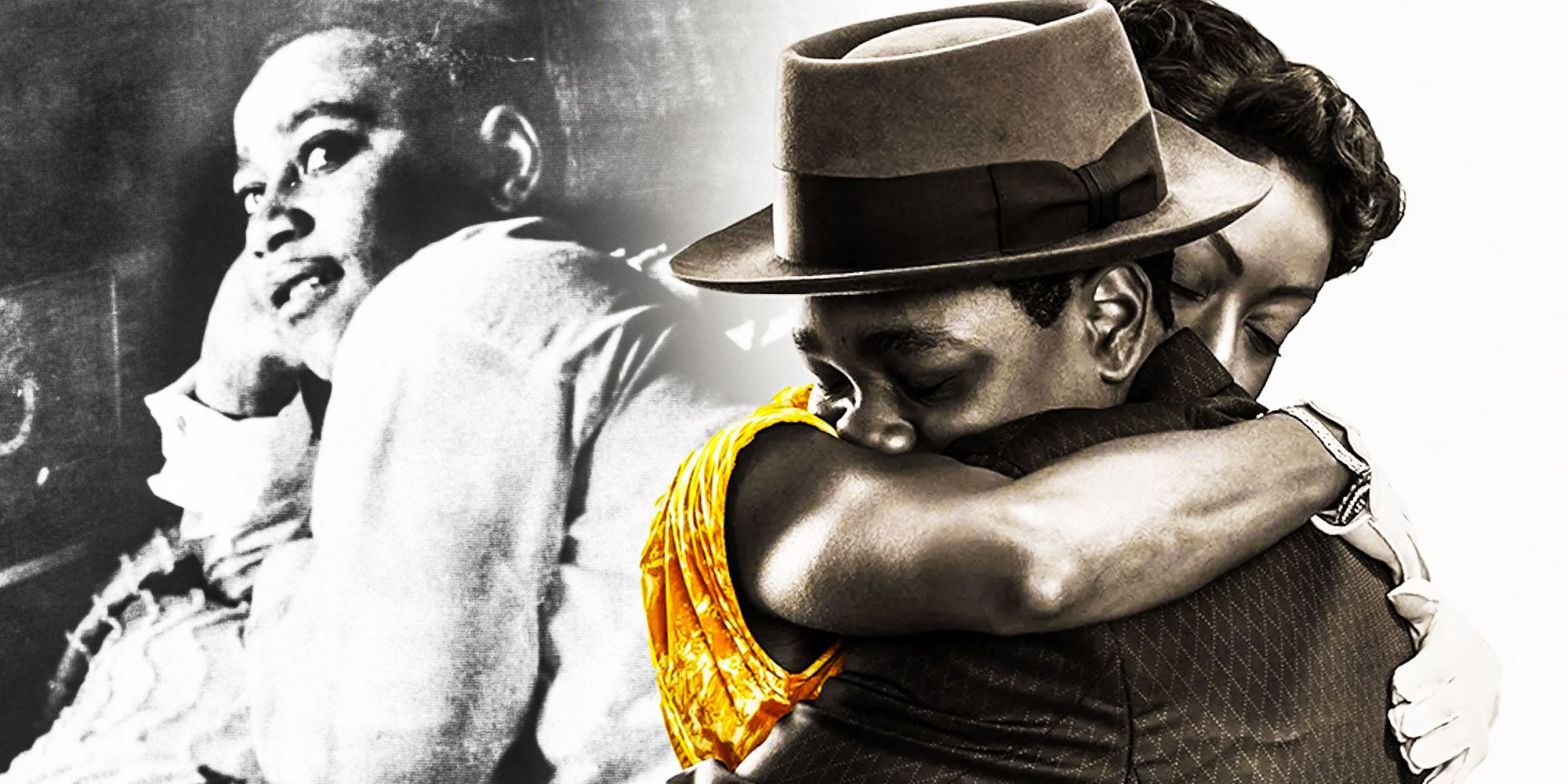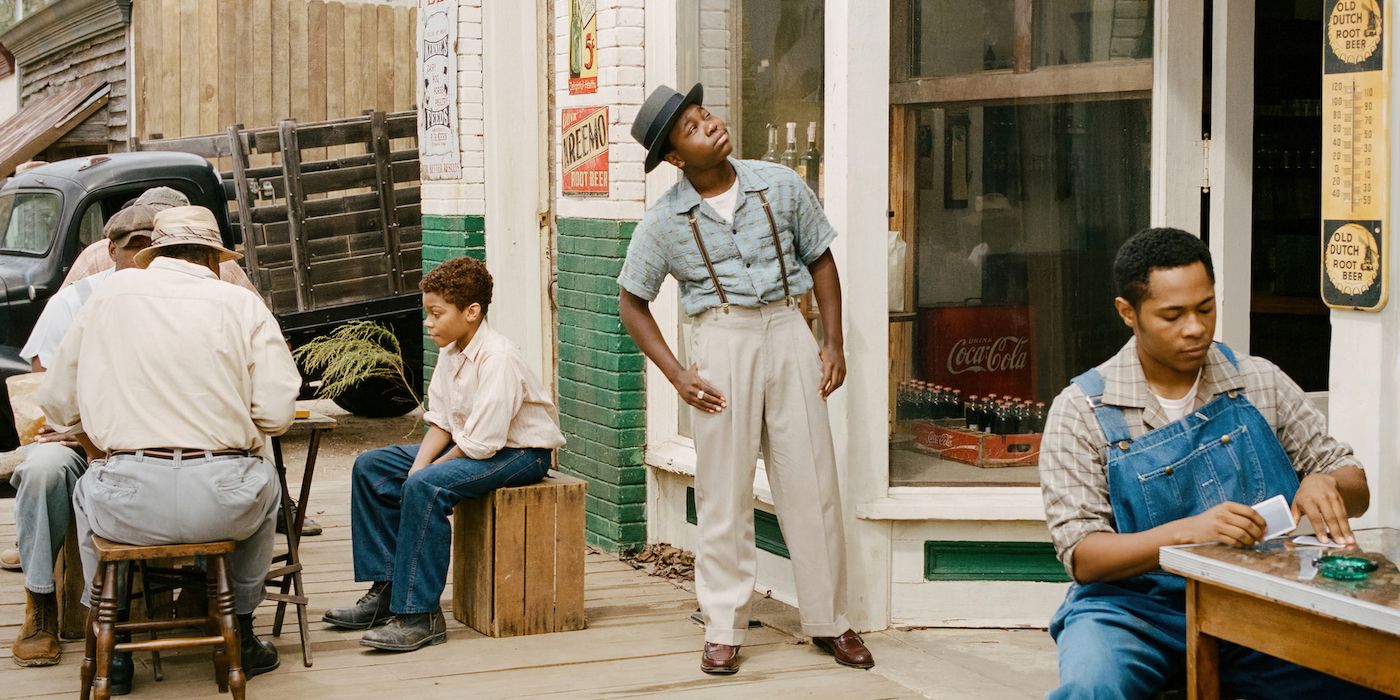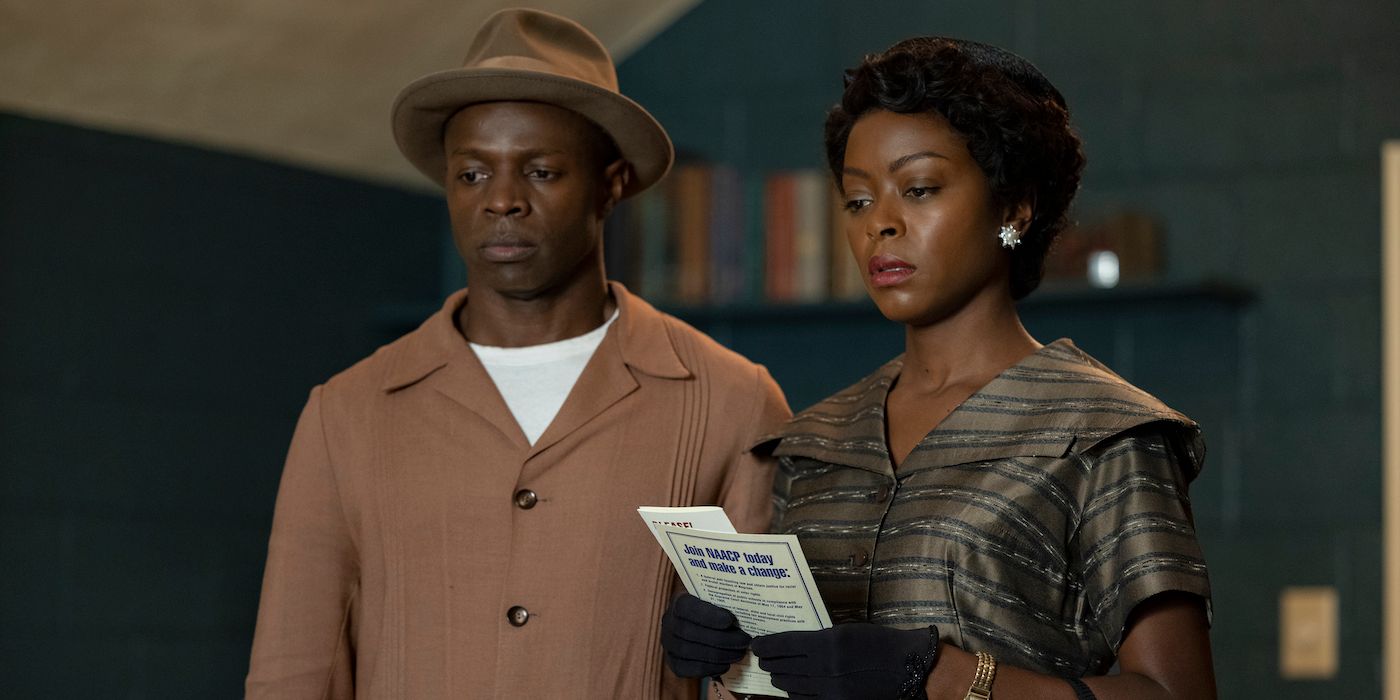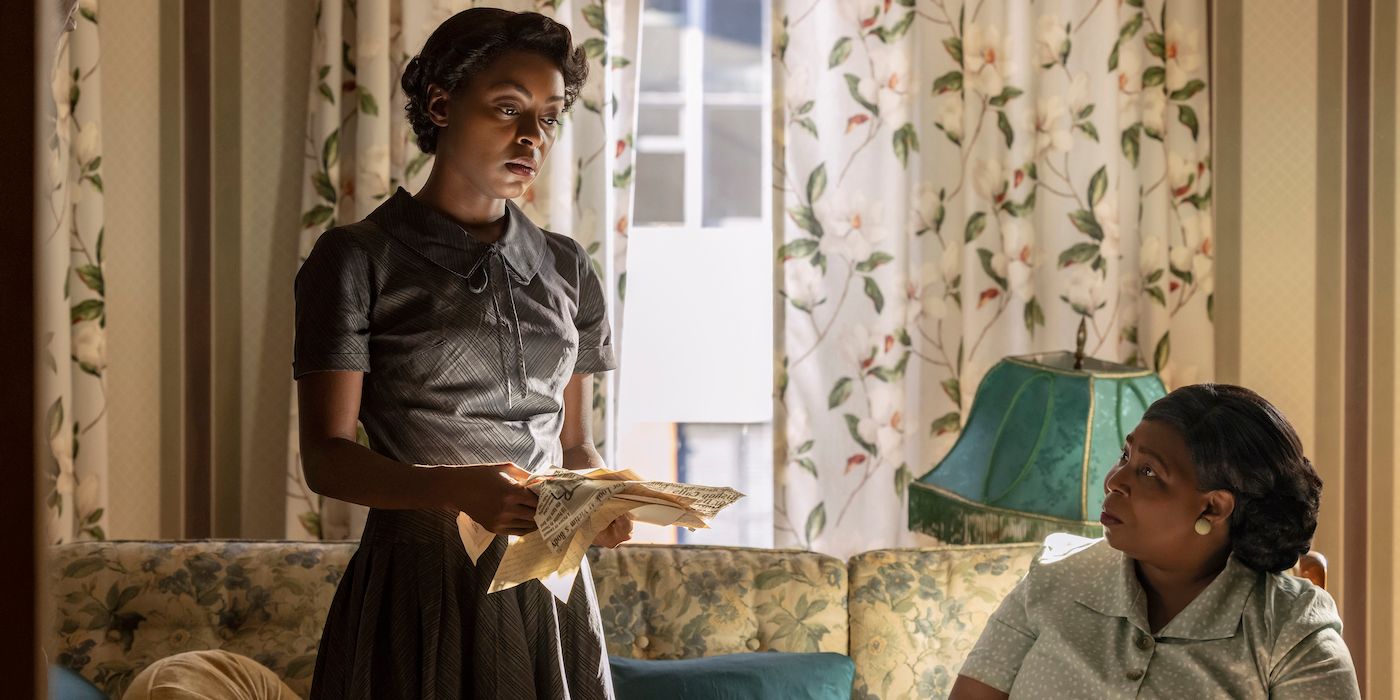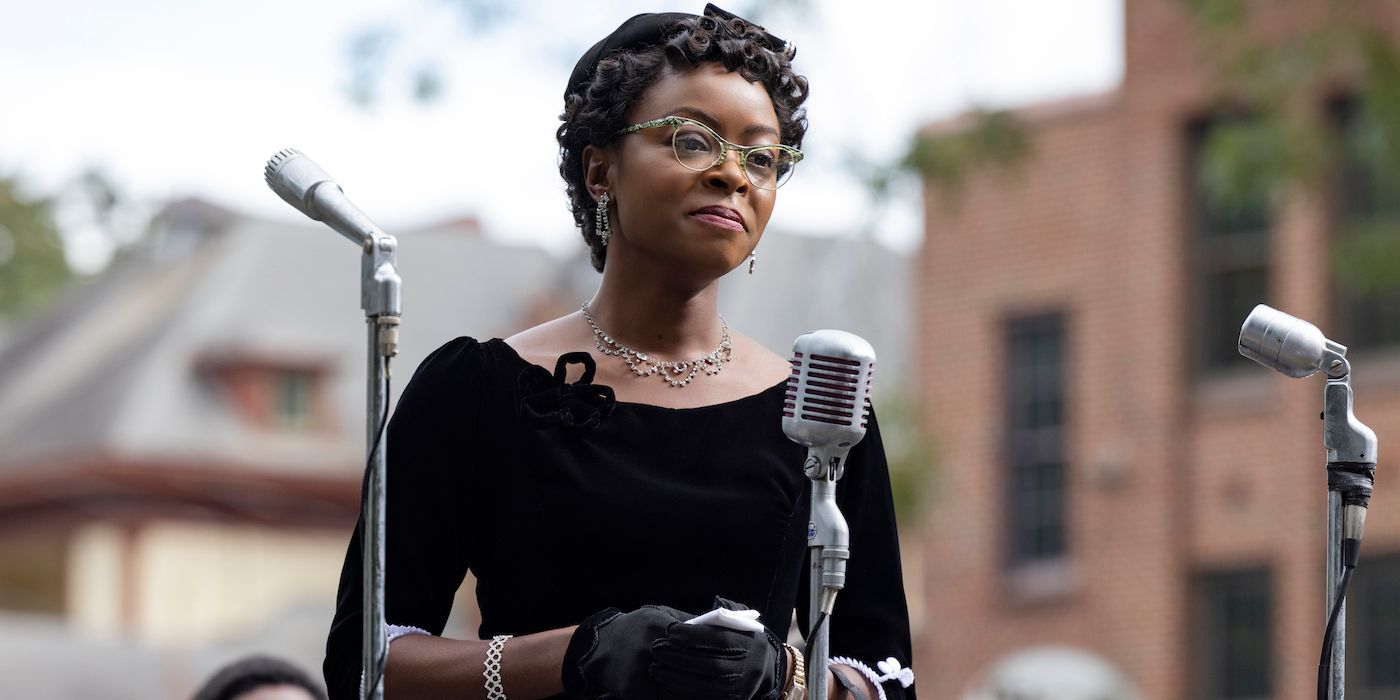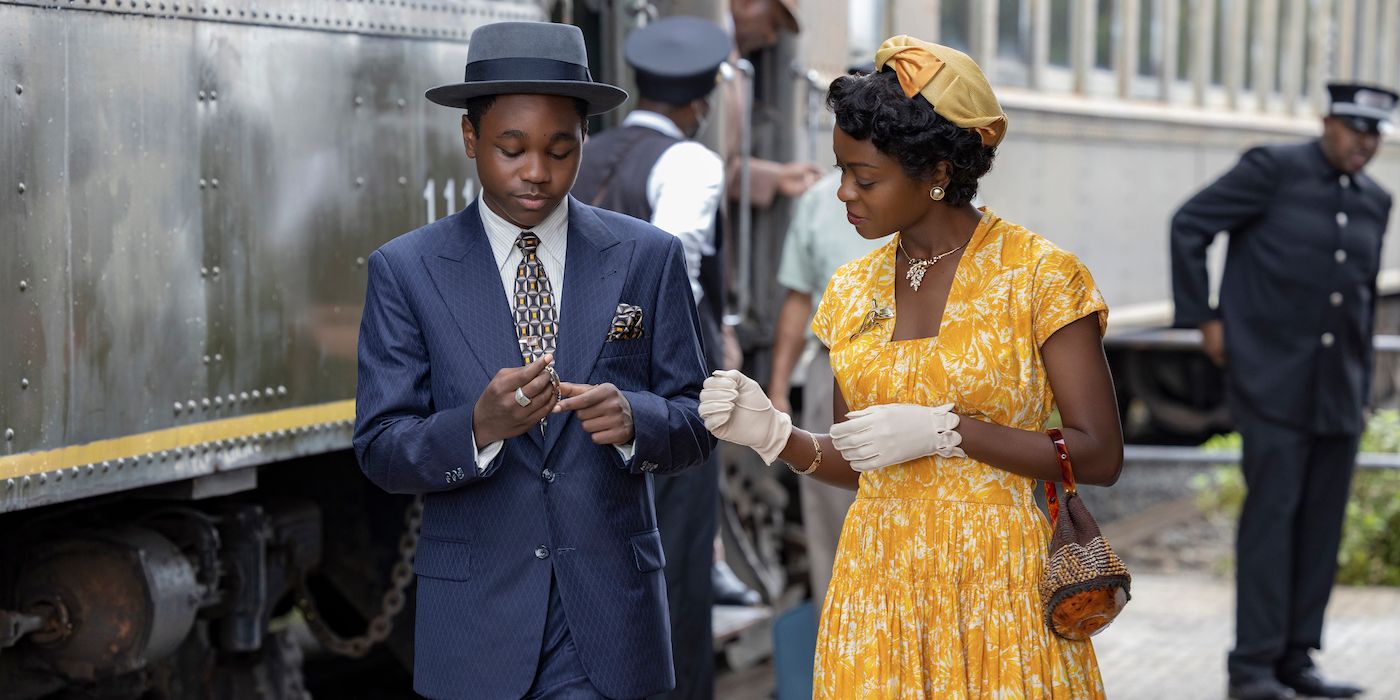Warning: This article contains spoilers for Till.
This article contains discussions of racial violence.
The biographical film Till, directed by Chinonye Chukwu, is based on the true story of Emmett Till and Mamie Till-Mobley, and here's how close the movie is to real life. Emmett's story has been depicted in media before in books, plays, and, particularly, in various documentaries, such as The Untold Story of Emmett Louis Till (2005) by Keith Beauchamp, who co-wrote Till with Chukwu and Michael Reilly. However, this is the first time these events are shown in a fictional film, while still being based on biographical elements and the real people involved. With many movies dramatizing real stories, such as the much-discussed Blonde that divided reviews, viewers of the film may wonder how accurate this film really is and what elements Till may have left out from its narration of the events.
The film follows Mamie Till (Danielle Deadwyler) as she pursues justice after the lynching and brutal murder of her 14-year-old son Emmett Till (Jalyn Hall) by two white men while he was visiting his family in Money, Mississippi, in 1955. As such, Till depicts a pivotal moment in the history of the civil rights movement in the United States as Emmett's murder became associated with racial and systemic injustice due to its brutality, as well as with the fight for equality. Here's a breakdown of Emmett's and Mamie's true story, including what was depicted accurately in Till and the elements that were not ultimately included in the film.
Who Were Emmett and Mamie Till? The Real People Behind Till
Till focuses on its two titular characters, Emmett and Mamie Till, respectively played by Danielle Deadwyler and Jalyn Hall. The film is told through the point of view of Mamie, who became an activist and educator after her son Emmett was brutally murdered by two white men at 14 years old in August 1995. Mamie was born in Mississippi but moved to Chicago with her family as a child. After her parents' divorce when she was 13, Mamie found comfort in her studies, in which she excelled and was supported by her mother. At 18, she met Louis Till who she married the same year, despite her parents' disapproval.
The couple had their only child Emmett soon after but separated only two years later. Emmett grew up in Chicago and was raised by his mother and his grandmother Alma, played by Whoopi Goldberg, who was a producer on Till as well. After contracting polio at six years old, Emmett was left with a stutter for the remaining years of his life. In 1951, Emmett briefly moved to Detroit with his mother, where Mamie married "Pink" Bradley the same year. Emmett moved back to Chicago soon after to live with his grandmother, where he was subsequently joined by his mother and stepfather. The latter returned to Detroit a year later after he and Mamie divorced. After her second marriage fell apart, Mamie started working for the U.S. Air Force while Emmett helped her with taking care of the chores at home. Emmett also protected his mother against Bradley when Mamie's ex-husband threatened her. Otherwise, Emmett grew up as a happy child who liked to dress smartly and spend time with his friends.
Who Was Emmett’s Father? What The Movie Leaves Out
Louis Till, Emmett's biological father, was not in his son's life for long. Perhaps that is why Chinonye Chukwu, Till's director, did not include much about him in the film. However, the details of Louis' story and his relationship with Mamie emerged throughout the trial and are mostly left out in Till. Louis and Mamie separated in 1942 when she found out about his infidelity. After Louis' abusive behavior, Mamie obtained a restraining order against him. However, after violating it multiple times, he was ordered to choose between serving jail time and enlisting in the U.S. Army, which he did in 1943. Two years later, Louis was executed due to misconduct while serving in Italy. During the trial for Emmett's murder, it was revealed that he was sentenced to death upon charges of raping an Italian woman after the appeal of his sentence was denied. Mamie only found out the truth years later as her request to learn more about her ex-husband's death was repeatedly denied.
What Happened To Emmett In Mississippi
A few days after arriving in Mississippi for summer vacation in August 1955, Emmett and his cousin went to the local grocery store to buy candy. When Emmett walked in, Carolyn Bryant, the store owner's wife, was alone in the front of the store. Although the facts of that day are still disputed, Till's retelling follows the most recent reconstruction of the story, which contradicts Bryant's testimony of Emmett being inappropriate with her. Emmett's fault seems to have been nothing more than talking to a white woman and whistling at her upon leaving the store, which is confirmed by different accounts. His youthful moment broke the unwritten law regarding the interactions between a Black man and a white woman in the South during the era of Jim Crow racism, a painful and focal moment in Black history. A few days later, on August 28, 1955, Carolyn's husband, Roy Bryant, and his half-brother, John William Milam, abducted Emmett after threatening his family. The same night, Emmett was beaten, tortured, and lynched.
Did Mamie Till Really Have An Open Casket Funeral?
The brutality of the murder is perhaps the aspect that is most remembered regarding the true story behind Till. Emmett's mutilated body was found three days after, almost unrecognizable from the prolonged torture prior to his death and days in the river after. As shown in Till, Mamie was reunited with her son's lifeless body in Chicago, where she insisted on a public funeral with an open casket that showed everyone the cruelty of Emmett's murder. As such, his disfigured body became a symbol of the widespread racism of the time as Emmett Till's death is still referenced today. Both the open casket and the photo of Mamie with the bloated and mutilated body that circulated in various newspapers at the time are present in the movie and accurate to the real events Till is based on. In fact, both of these contributed to drawing attention not only to Emmett's ruthless lynching but also to the black civil rights movement in Mississippi as a whole.
How Accurate Till Is To The Real Trial
The trial is the focus of the second part of the film as Mamie courageously chooses to speak out for her son in front of an all-male and all-white jury. In fact, Mamie really did testify and respond to the ruthless questioning of the defense in an emotional and moving speech, which may be one of the many reasons why there was a therapist on Till's set. As Till suggests, the testimony of Mose Wright, Emmett's uncle, was essential in identifying the murderers and was truly considered a courageous act at the time. It is also true that the courtroom was segregated, with a separate section for the Black reporters present.
Did Mamie Till Really Become An Activist?
Mamie is now best known for her activism as part of the civil rights movement in the United States. After her key role and testimony during the trial, it became evident that Mamie was a good public speaker. As such, the NAACP, with which Mamie is shown to be in close contact in Till, eventually hired her to share her son's story and go on a speaking tour across the United States. The ending of the movie Till shows exactly this: Mamie's future as an activist and key figure in the civil rights movement in the United States as she delivers one last powerful speech.
Did Emmett’s Murder Influence The Civil Rights Movement?
As shown in Till, Emmett's murder attracted the attention of various newspapers due to the brutality and Emmett's young age. Further attention was received due to the fact that, as the movie accurately depicts, the two murderers were let go without any charge, as they were found innocent by the all-white jury, sparking outrage among people across the country. Rosa Park famously admitted to having thought of Emmett Till when she took a stand and decided not to move to the rear of the bus and give up her seat for a white person. The effect that Emmett's murder and trial had on the fight for racial equality is arguably downplayed in Till by the characters, as it mostly focuses on the figure of Mamie and her pain in losing her child.
Was There Ever Justice For Emmett?
Till profoundly captures the injustice of this case: Emmett Till was brutally murdered and the men responsible suffered absolutely no consequences. What made it worse was that in 1956, both men confessed to the crime in a paid interview with Look magazine, describing how they tortured and murdered the 14-year-old boy. However, due to them being legally protected by the legal defense of double jeopardy, they could not be charged a second time for the crime, as they had already been acquitted. Ultimately, neither Bryant nor Milam served time, or received a sentence for Emmett Till's murder, despite the reopening of the case both in 2004 and again in 2017. Similarly, Carolyn Bryant was never charged with providing false testimony, despite her culpability being called into question in the latest reopening of the case. Tragically, young Emmett Till has still not received true justice almost 70 years later.

